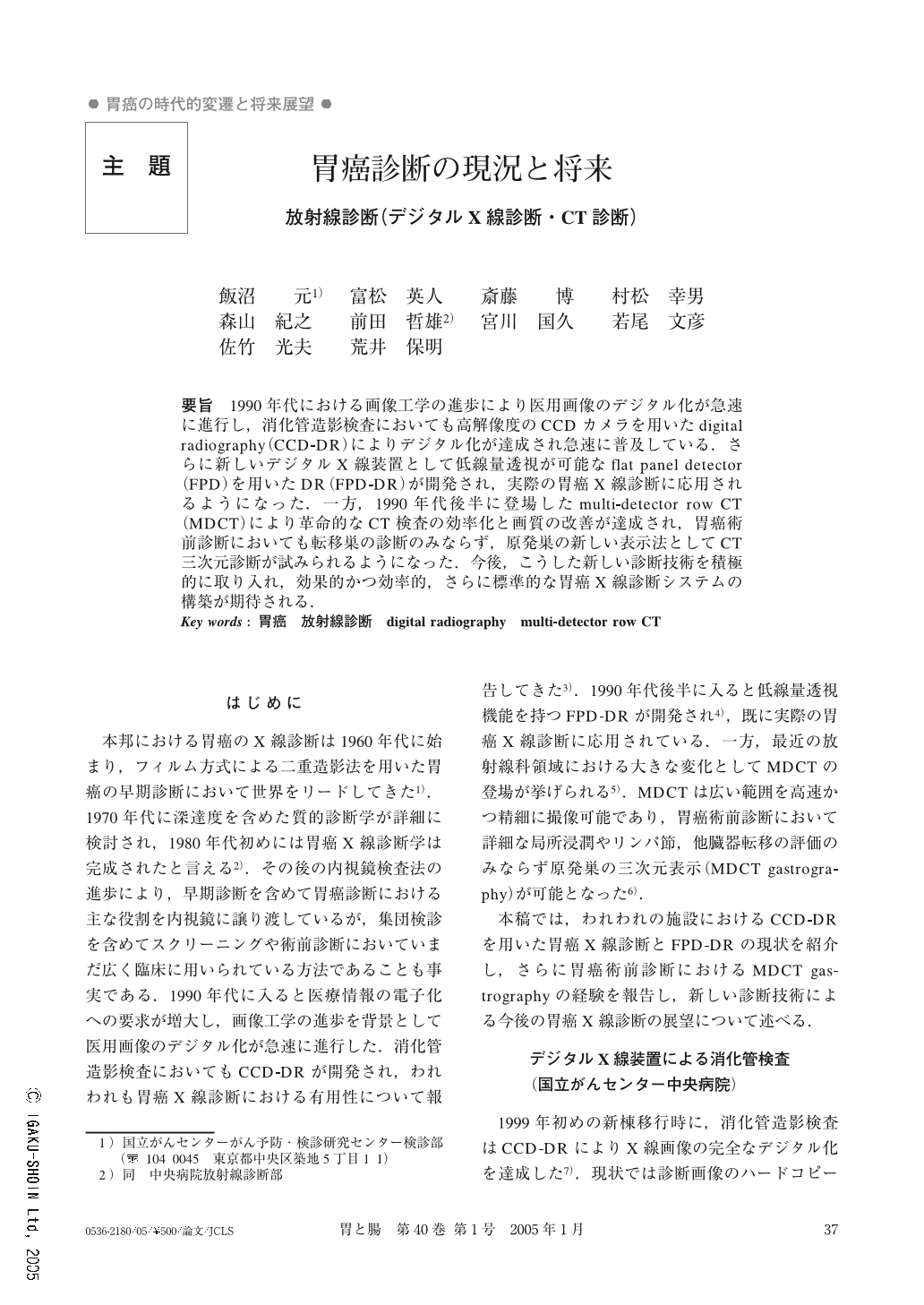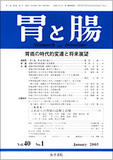Japanese
English
- 有料閲覧
- Abstract 文献概要
- 1ページ目 Look Inside
- 参考文献 Reference
- サイト内被引用 Cited by
要旨 1990年代における画像工学の進歩により医用画像のデジタル化が急速に進行し,消化管造影検査においても高解像度のCCDカメラを用いたdigital radiography(CCD-DR)によりデジタル化が達成され急速に普及している.さらに新しいデジタルX線装置として低線量透視が可能なflat panel detector(FPD)を用いたDR(FPD-DR)が開発され,実際の胃癌X線診断に応用されるようになった.一方,1990年代後半に登場したmulti-detector row CT(MDCT)により革命的なCT検査の効率化と画質の改善が達成され,胃癌術前診断においても転移巣の診断のみならず,原発巣の新しい表示法としてCT三次元診断が試みられるようになった.今後,こうした新しい診断技術を積極的に取り入れ,効果的かつ効率的,さらに標準的な胃癌X線診断システムの構築が期待される.
Digitalization of images in GI examinations has been achieved with digital radiography (DR) using a CCD camera unit with 4 million pixels, called CCD-DR. The system has diagnostic performance equal to that of the film-screen system and is now used widely in the X-ray diagnosis of gastric cancers. However, recent development of imaging technologies has created a flat panel detector (FPD) as an X-ray detector. We believe that FPD-DR will be able to pave a new way to really digitalized diagnosis in the X-ray diagnosis of gastric cancers, resulting in an epoch-making improvement in operability due to its compact and space-saving design, as well as its improved image quality. On the other hand, recent technology has also created multi-detector row CT (MDCT), allowing acquisition of images of the entire abdomen during a single breath hold. The advent of MDCT has brought greater speed of acquisition and higher resolution images, with resultant enhancement of image quality and reduced artifacts due to motion. We have applied this technique, under the name of gastrography for visualization of gastric cancers using 3D volumetric data generated by helical scanning. Based on our experience, the imaging precision with MDCT gastrography in the diagnosis of early gastric cancers, especially of early lesions, is, at present, considerably inferior to that using conventional gastroscopy. However, various imaging modes of MDCT gastrography including MPR views for detecting metastatic lesions will surely be enhanced with further development of MDCT. Sixteen-row or more MDCT scanners will soon be introduced, and the image qualities of MDCT gastrography will thereby be much improved. Conventional barium and endoscopic studies might be replaced in the near future. Furthermore, 3D volume data of MDCT gastrography is digital data of density, therefore, the method has a great potential for becoming a modality for computer-aided diagnosis.

Copyright © 2005, Igaku-Shoin Ltd. All rights reserved.


